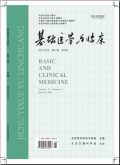基础医学与临床2024,Vol.44Issue(7):906-911,6.DOI:10.16352/j.issn.1001-6325.2024.07.0906
ICU危重患者静脉血栓栓塞症预防策略
Prevention strategies of venous thromboembolism in critically ill ICU patients
摘要
Abstract
Venous thromboembolism(VTE)includes deep venous thrombosis(DVT)and pulmonary embolism(PE).Patients in intensive care unit(ICU)are often at a high risk of VTE due to combining many risk factors.Prevention strategies of VTE in critically ill patients are crucial,including identification of risk factors,the risk as-sessment of thrombosis and bleeding,mechanical prophylaxis and drug prophylaxis,effect monitoring,and quality control.Since the risk of VTE in ICU patients is high,the risk of bleeding should not be ignored.It is a challenge for ICU physicians to comprehensively evaluate the risk of thrombosis and bleeding in critically ill patients and im-plement effective preventive and monitoring measures in time.This article reviews the relevant research progress on prevention strategies of VTE in critically ill patients in order to provide clinical evidence for the prophylaxis of VTE in critically ill patients.关键词
静脉血栓栓塞症/危重患者/风险评估/血栓预防策略Key words
venous thromboembolism/critically ill patients/risk assessment/thromboprophylaxis strategy分类
临床医学引用本文复制引用
谢芳菲,李双玲,王春梅..ICU危重患者静脉血栓栓塞症预防策略[J].基础医学与临床,2024,44(7):906-911,6.基金项目
国家临床重点专科建设项目(2023-141) (2023-141)
首都卫生发展科研专项(首发 2022-2-2016) (首发 2022-2-2016)

